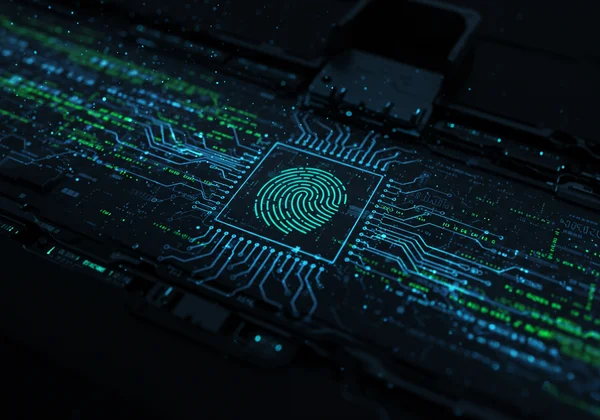EXIF Serial Number & Privacy: Can Your Camera Track You?
When you share a photo online, you might already worry about location data revealing where you live or work. But what if there's a more persistent identifier hidden in every shot you take? We're talking about the EXIF serial number, a unique digital fingerprint that can link all your photos back to a single device. But what is exif data, really, and how deep does this tracking potential go?
Most people are unaware that their camera embeds this specific number into every image file. While it seems harmless, it poses a significant privacy concern. This guide will unmask this hidden data, explore the risks, and show you how to regain control of your digital privacy. The first step to protection is awareness, and you can check your photo details safely with our tool.
What are EXIF Camera Serial Numbers and Why Do They Matter for Your Privacy?
Every time your digital camera or smartphone captures an image, it doesn't just save the pixels. It also embeds a wealth of information known as EXIF (Exchangeable Image File Format) data. This metadata includes familiar details like shutter speed, aperture, and ISO. Buried deeper within this data, however, is the camera's unique serial number, a detail that matters immensely for your image privacy risk.
Think of the EXIF serial number as your camera's unchangeable ID card. It’s a specific sequence of characters assigned by the manufacturer that is unique to your exact device. Unlike other settings, you can't change it. This permanency is what makes it a powerful tool for tracking and a potential threat to your anonymity.
Your Camera's Digital Fingerprint: How Serial Numbers Uniquely Identify Devices
The most critical aspect of a serial number is its uniqueness. It acts as a digital fingerprint for your hardware. If you take a hundred photos with the same camera, they will all share this identical fingerprint. This allows anyone with access to the full EXIF data to definitively identify devices used to capture images.

This isn't just theoretical. This feature is used by photographers to track their work and by law enforcement in digital forensics to link evidence to a specific device. However, in the wrong hands, this same feature can be used to connect anonymous photos posted across different platforms directly to you. You can see this and other unique camera info for yourself using a secure image metadata viewer.
Beyond Camera Model: The Hidden Data from Lenses and Accessories
The privacy trail doesn't stop with the camera body. Modern digital photography involves an ecosystem of equipment, and many components leave their own mark. High-end lenses, external flash units, and other accessories can also embed their own unique serial numbers into the image's metadata.
This creates an even more detailed profile of the equipment used to take a photo. For a technically savvy individual, this collection of serial numbers provides a wealth of camera specific metadata. They could potentially identify not just your camera, but your entire collection of expensive lenses, painting a detailed picture of the photographer behind the image. This level of advanced EXIF data goes far beyond what most people expect to share with a simple picture.
Unveiling Photo Tracking Privacy Risks
Understanding that serial numbers exist is one thing; recognizing the real-world photo tracking privacy implications is another. When you upload a photo to a blog, a forum, or a photo-sharing site that doesn't strip this specific metadata, you are potentially leaving a trail of digital breadcrumbs that can be followed back to you.
This risk is subtle but significant. While many major social media platforms like Instagram and Facebook remove most EXIF data to protect users, many other places on the web do not. This includes personal websites, niche forums, and some cloud storage services, creating vulnerabilities you may not be aware of.
The Digital Footprint: Linking Your Photos Across the Web
Here's a practical scenario: Imagine you post an anonymous product review with a photo on one website. Later, you share a picture of your pet on a different forum under another username. If both photos were taken with the same camera and the websites didn't remove the serial number, anyone could analyze the EXIF data and establish a concrete link.
![]()
This technique of linking photos creates a digital footprint you never intended to leave. It can de-anonymize your online activity, connecting separate personas and revealing more about you than you're comfortable with. An adversary could aggregate your photos from across the web to build a comprehensive profile of your activities, hobbies, and locations.
Who Can Access and Utilize This Sensitive Data?
Once a photo with its metadata is public, anyone can access it. While some uses are benign, others are more concerning. The potential users of this data include:
- Data Brokers: Companies that collect and sell personal information could use serial numbers to enrich their profiles on individuals.
- Stalkers and Malicious Actors: An obsessed individual could track a person's activities by linking photos from different sources.
- Journalists and Researchers: They might use this data to verify the source of an image or track a story.
- Overreaching Authorities: In some regimes, this data could be used to identify anonymous dissidents or whistleblowers.
This data's accessibility is what truly heightens your image privacy risk. It doesn't require sophisticated hacking—just the right tool and the knowledge of what to look for. An online exif viewer is all that's needed to start.
Real-World Scenarios: How Serial Numbers Could Be Used for Tracking
The potential for tracking through EXIF data is not just hypothetical. Consider a photographer who contributes anonymously to a stock photo website but also runs a personal travel blog under their real name. By matching the camera serial number from the stock photos to the blog photos, their anonymous professional work could be instantly linked to their public identity.
This creates clear privacy vulnerabilities. It could impact a person's career, expose them to unwanted attention, or undermine their safety if they are covering sensitive topics. Before you share your next great shot, it's crucial to understand what data it carries.
Safeguarding Your Image Privacy: Removing Camera Info from Photos
The good news is that you are not powerless. You can take proactive steps to protect your privacy by managing your photo's metadata. The process of removing camera info from photos starts with one simple action: inspection. You can't protect yourself from data you don't know exists.
Before uploading any image, you should get into the habit of checking its metadata. This allows you to make an informed decision about what information you are comfortable sharing with the world. A reliable and secure tool is essential for this step.
Identifying Hidden Camera Data with an EXIF Viewer
The most important tool in your privacy toolkit is a trustworthy EXIF viewer. This allows you to view image exif data and see exactly what information is embedded in your files, including camera and lens serial numbers. However, not all viewers are created equal. Many online tools require you to upload your photos to their servers, creating a new privacy risk.
This is where our EXIF viewer is fundamentally different. Our tool works entirely within your browser. When you drag and drop an image, all processing happens locally on your computer. Your photo is never uploaded to our servers, guaranteeing complete privacy and security. You can check exif data with zero risk.

Practical Steps for EXIF Serial Number and Metadata Removal
Once you've identified sensitive metadata, the next step is removal. While this platform focuses on safely viewing data, several offline applications can help with exif data removal. Software like Adobe Lightroom or dedicated free tools like ExifTool can effectively strip exif data before you share your images.
The key is to build a safe workflow:
- Shoot: Capture your photos as usual.
- Inspect: Use a private tool like our EXIF viewer to see what's inside.
- Clean: Use a trusted desktop application to remove sensitive metadata if needed.
- Share: Upload the cleaned image with confidence.
Your Private & Free Solution for Metadata Control
For the crucial inspection step, our EXIF viewer is your best ally. We provide a comprehensive and user-friendly private metadata tool without compromising your security. Our commitment to privacy is absolute because our platform is built on a "zero-upload" principle.
Whether you're a professional photographer concerned about your work or a casual user worried about privacy, our free exif editor (viewer) empowers you. It gives you the knowledge to take control of your digital footprint. Start making informed decisions today by analyzing your photos on our secure platform.
Take Control of Your Photo Privacy Today
The hidden EXIF serial number in your photos is more than just a technical detail—it's a direct link to your physical devices and, by extension, to you. It creates a risk of photo tracking privacy that can connect your activities across the internet. In today's interconnected world, understanding and managing this hidden data is essential.

By understanding what metadata your photos contain and adopting a workflow that includes inspection and cleaning, you can confidently share your images without compromising your privacy. Gaining this awareness is the crucial first step. We encourage you to start now. Use the free, secure, and private online EXIF viewer to see what your photos are really saying about you.
Frequently Asked Questions About EXIF Data & Privacy
What is EXIF data and why is it in my photos?
EXIF data is metadata automatically created by your camera or smartphone when you take a photo. It includes technical information like camera settings (aperture, shutter speed), date, time, and sometimes GPS location and device serial numbers. It's designed to help photographers organize and analyze their work.
How do I remove EXIF data, including serial numbers, from my photos?
First, you need to see what data is present. You can use a secure tool like our free tool to inspect the metadata without uploading your file. To remove it, you can use desktop software like Adobe Lightroom, GIMP, or specialized metadata stripping tools before you upload the image online.
Does EXIF data always show location (GPS) information?
No. GPS location is only recorded if the feature is enabled on your camera or smartphone. However, even if location services are turned off, other sensitive data like the camera model, lens information, and the unique device serial number are almost always recorded.
Do screenshots or downloaded images contain camera serial numbers?
Typically, no. Screenshots capture pixels on your screen and don't come from a camera, so they lack camera EXIF data. Similarly, images downloaded from major social media sites have usually had this data stripped. However, an image downloaded from a personal blog or a different source might still contain the original metadata, which you can check EXIF data.
Is our EXIF data tool safe and private for checking my photos?
Yes, it is fundamentally safe and private. Our core competitive advantage is that all image processing is done locally in your browser. Your photos are never uploaded to our servers. This means we never see or store your images, guaranteeing 100% privacy and data security.